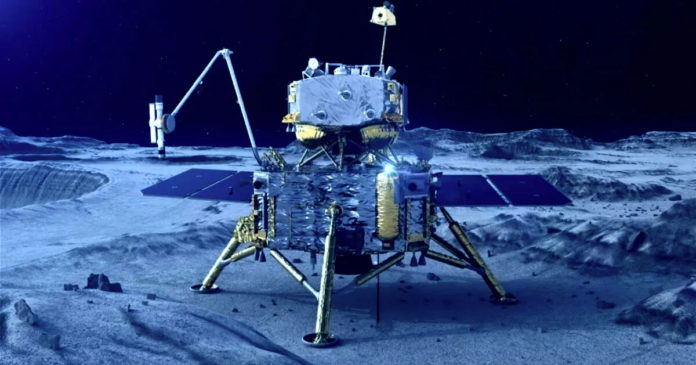Chinese scientists have made an unusual discovery while analysing the sample Chang’e-5 collected from the Moon’s surface in December 2020.
They found naturally occurring “few-layer graphene” for the first time, as state-run news agency Global Times reports, which could have major implications for humankind’s plans to make use of local resources once on the lunar surface.
The discovery could also offer new insights into the early geological evolution of the Moon. As the South China Morning Post reports, it may even upend a long-held theory that the Moon was formed after a small planet collided with the Earth and that much of its carbon came from this impact.
“The prevalent giant impact theory has been strongly supported by the notion of [a] carbon-depleted Moon derived from the early analysis of Apollo samples,” the team led by researchers from Jilin University wrote in their paper published in the journal National Science Review, as quoted by the SCMP.
However, the findings suggest the existence of a “carbon-capture process on the Moon,” leading to the “gradual accumulation of indigenous carbon” — a discovery that “may reinvent the understanding of chemical components… and the history of the Moon.”
No Impact
Using a form of non-destructive chemical analysis called “Raman spectroscopy,” the team confirmed the discovery of a type of few-layer graphene, which is graphene with anywhere between two and ten layers that can also be manufactured in a lab.
The researchers suggest the material may have formed as a result of solar wind battering the lunar surface and early volcanic eruptions.
The existence of pure “indigenous carbon” could challenge the long-held hypothesis that a small planet, roughly the size of Mars, collided with the Earth to form the Moon about 4.45 billion years ago.
However, the researchers admitted that meteorites may have still led to the formation of graphitic carbon on the Moon, as previous studies have suggested.
“Further in-depth property investigation of natural graphene would provide more information on the geologic evolution of the Moon,” the team concluded.
MORE:

